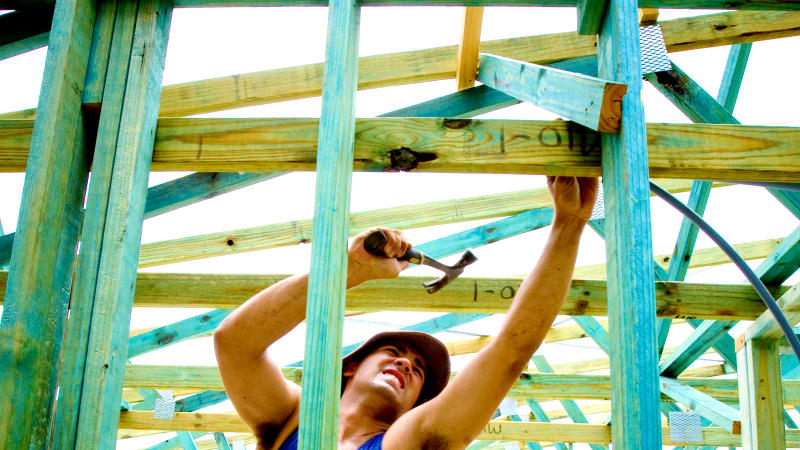
“However, we do not expect this stimulus to flow through positively to new construction until 2020.”
NAB economist Kaixin Owyong said the expected 15 per cent peak-to-trough decline in residential investment would take until the end of 2020 to work itself through.
“There was no sign of stabilisation in the April data as downtrend in house approvals accelerated,” she said.
Construction jobs ads fall
The falling approvals indicated that construction activity was likely to continue to decline over the next year, said Callam Pickering, an economist with jobs site Indeed.
“With construction activity likely to moderate, we expected reduced opportunities for construction workers,” Mr Pickering said.
“Job postings on Indeed for construction workers are already down almost a quarter from their peak.”
The weakness in approvals of detached dwellings, which fell for their third straight month to the lowest level in almost six years, triggered warnings from industry economists.
“It is ominous that the weakness in new home building is spreading to those parts of the market which are traditionally more resilient during downturns,” Master Builders Australia chief economist Shane Garrett said.
April’s weakness was likely influenced by caution ahead of this month’s federal election and with that out of the way, government infrastructure spending was necessary to return new dwelling investment to stronger levels, Mr Garrett said.
“Many significant infrastructure projects have been announced by government over the past year. Speedily converting these announcements into real, visible activity on the ground would provide a major boost to the building industry, the wider economy and confidence more generally,” he said.
While the picture for residential work was weak, the non-residential approvals were more positive. The total value of non-residential building approvals jumped to $4.1 billion in April from $3.5 billion in March, driven in part by strong office demand in east coast Australia.
“There was a sharp life in non-residential approvals, which rose 16 per cent in the month,” Ms Owyong said.
“Office approvals jumped to a record high, while approvals for warehouses and hotels are also at high levels.”








